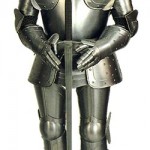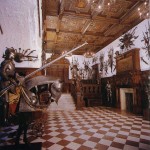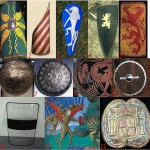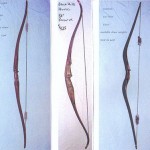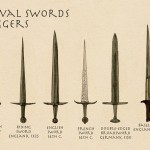Armaments
European warfare during the middle ages was dominated by elite groups of knights supported by massed infantry (both in combat and ranged roles). They were involved in mobile combat and sieges which involved various siege weapons and tactics. Knights on horseback developed tactics for charging with lancesproviding an impact on the enemy formations and then drawing more practical weapons (such as swords) once they entered into the melee. Whereas infantry, in the age before structured formations, relied on cheap, sturdy weapons such as spears and billhooks in close combat and bows from a distance. As armies became more professional their equipment was standardized and infantry transitioned to pikes. Pikes are normally eight to seven feet in length,in conjunction with smaller side-arms (short sword).
In Eastern and Middle Eastern warfare similar tactics were developed independent of European influences.
The introduction of gunpowder from the Far East at the end of this period revolutionized warfare. Formations of musketeers, protected by pikemen came to dominate open battles, and the cannon replaced the trebuchet as the dominant siege weapon.
